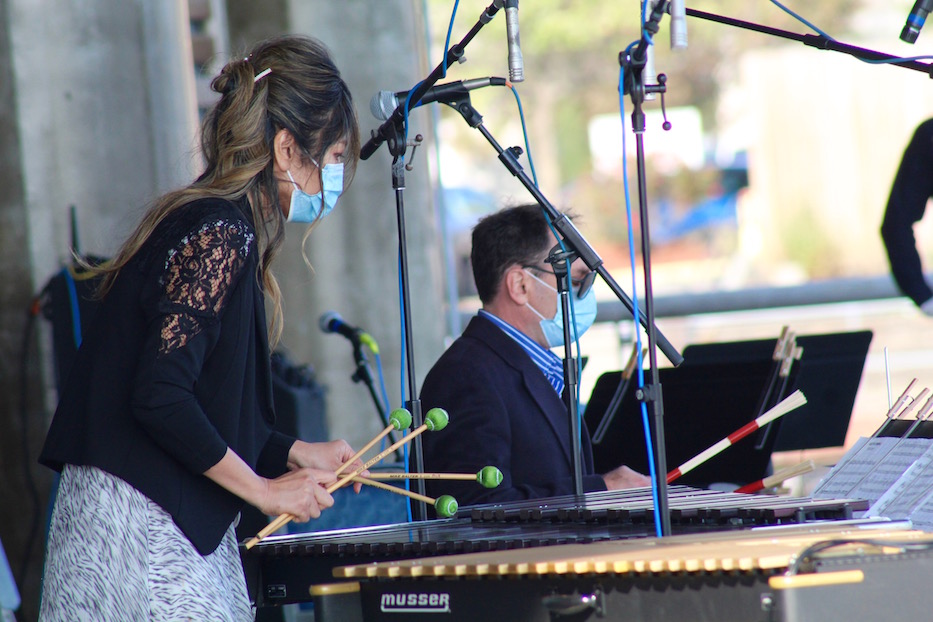
Culture & Community | Politics | Arts & Culture | COVID-19

One hundred and fifty-four Connecticut arts organizations have been awarded a total of $9 million in federal CARES act funding, in grants from the state's COVID Relief Fund for the Arts. Monday afternoon, the state announced recipients in an email from the Connecticut Office of the Arts.
Of 154 organizations, 13 are in New Haven and three are in Hamden. Several more span the greater New Haven region. They range from large theaters to music schools to small dance companies that have had to choreograph over Zoom. Since March, all of them have taken a financial hit due to the pandemic, scrambling to find funding as they move arts and educational programming online.
"This is a huge relief for us," said Mandi Jackson, executive director of Music Haven. "This allows us to continue the programming we've been providing."
The money, which will be distributed by the Connecticut Office of the Arts, comes out of an overall $1.3 billion in federal CARES Act funding that the state received earlier this year. All recipients received $5,000 in unrestricted funding, followed by a 50 percent match of funds raised since March. It is not related to the proposed Save Our Stages Act, which has stalled in Congress, nor is it to the 120 small CARES Act Emergency Relief Grants that the Office of the Arts distributed in June.

Music Haven student Marlee Wright playing in front of her namesake at Ninth Square Caribbean Market. Elisha Hazel Photo.
For Jackson, the $101,100 in funding will allow her to breathe a little more easily as she navigates an end-of-year fundraising campaign and $663,500 annual operating budget. When schools closed in March, Music Haven was in the middle of student recitals and shut down its Erector Square headquarters.
By mid-month, teachers had made the pivot to Zoom and FaceTime, trying to fill students' technological needs on the fly. Jackson worked with other arts organizations and schools in the area to get students the Chromebooks they needed to do their homework and keep up with their lessons. In the ten months since, the organization has continued to provide tuition-free programming to roughly 80 students.
Its staff members, including four resident musicians and one part-time teacher, have remained on the payrolls. Because Music Haven maintains its physical space in Erector Square, operating costs have continued to rise despite the absence of kids from the building.
In the spring, Jackson also watched a year of new line item funding from the state disappear before her eyes. The CARES Act dollars will cover approximately that amount as Music Haven continues to build its programming—and its annual budget.
"For us, having the security of knowing that we're going to get that state CARES Act support is huge," she said. "This just supports our general operating expenses. The money will provide free lessons and programming and instruments to our kids."
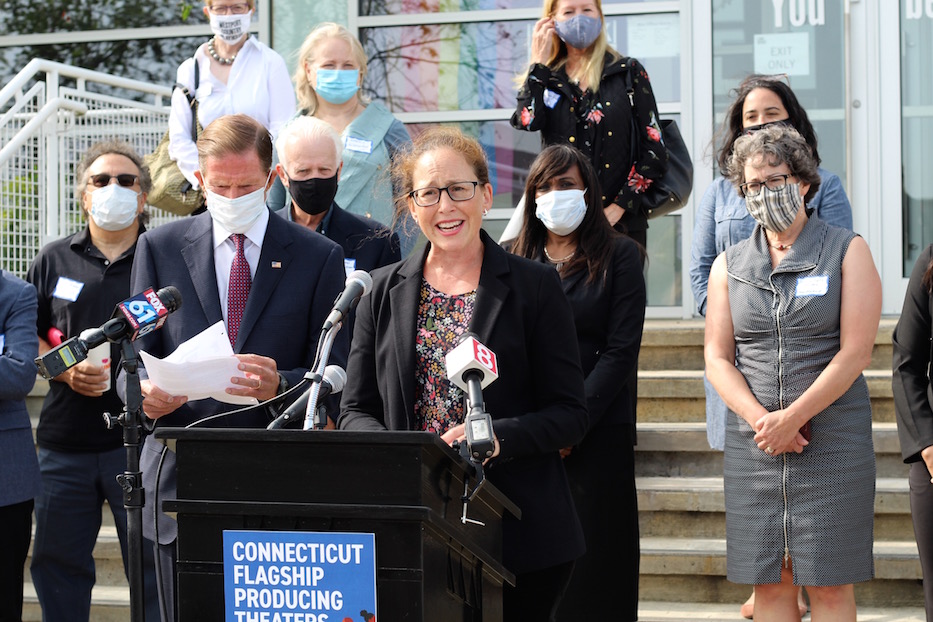
Long Wharf Theatre Managing Director Kit Ingui at a press conference in September 2020. Lucy Gellman File Photo.
That relief also rings true for Long Wharf Theatre, which received $551,400 in grant funding. As the theater continues to plan an emergent season, Managing Director Kit Ingui said those federal dollars will help keep the theater afloat.
"We are incredibly grateful to receive this funding," she said in a phone conversation Monday evening. "It is a testament to the support that our supporters have shown us since March. It reinforces the value of the theater to them. We were going to operate in a deficit mode and this will allow us to reimagine what we do."
It comes at a time when performing arts venues continue to struggle across the state and the country. Since March, Ingui estimated that the theater has lost $1 million in ticket sales alone. After an initial round of layoffs in the spring, Long Wharf eliminated 40 full- and part-time positions, bringing a staff of 65 to 25. Those do not include hundreds of contract workers—actors, directors, dramaturgs, educators, artistic fellows and designers—who usually fill the theater each year.
Now, the grant will allow the theater to invest in remaining staff, programming, and operating expenses. In September, Long Wharf announced that it would be launching a new membership model alongside its season, titled "One City, Many Stages." Monday, Ingui pointed to new initiatives at the theater, including its upcoming New Works Festival.
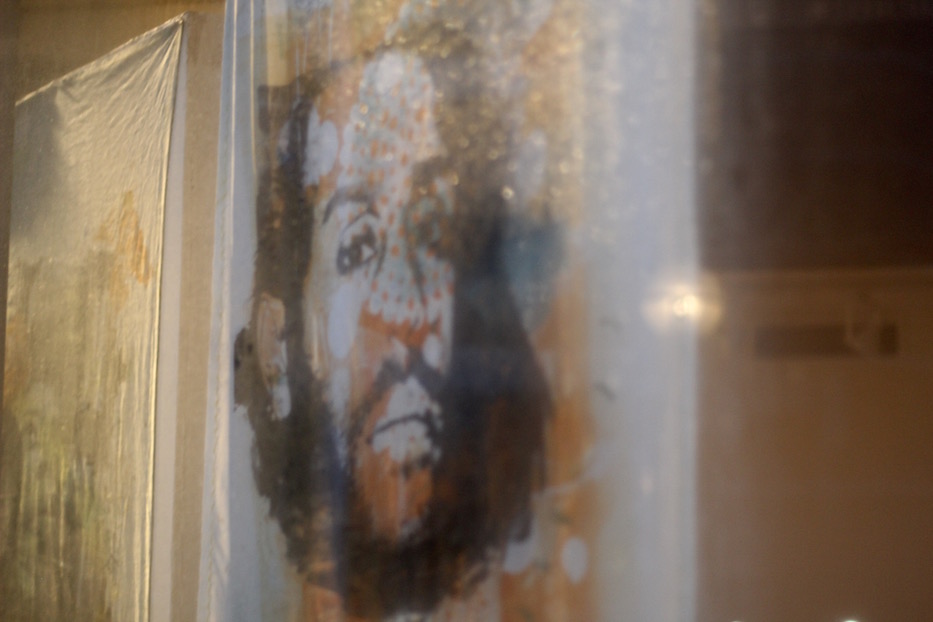
Monday afternoon, Creative Arts Workshop Executive Director Anne Coates said she is also feeling grateful for the funding, of which the organization received $77,300. While she acknowledged that COVID-19 is a moving target—tracking the virus' surge in the news is the first thing she does each morning—she is hoping the money can go towards a small-scale reopening of the building early next year.
Ideally, she said, she'd like to test the waters in late January, with just one or two classes at limited capacity. Like Music Haven, "we have operating costs whether we're opening or not." She's also planning to put some of the funding into CAW's online programming, the bulk of which has remained free throughout the pandemic.
Currently, the workshop is running on three full- and part-time employees, as opposed to the seven that were employed prior to the pandemic. All remaining employees have taken a pay cut. While the funding is a small portion of an annual $865,000 operating budget, Coates said it still comes as a tremendous relief.
"This is lovely," she said. "I was very careful about not pinning my hopes on a dollar amount, and I think that it's an important piece of the funding picture. One piece is not going to solve it—it is all part of a much more complex picture. We weren't eligible for so many other programs, and this will certainly help."
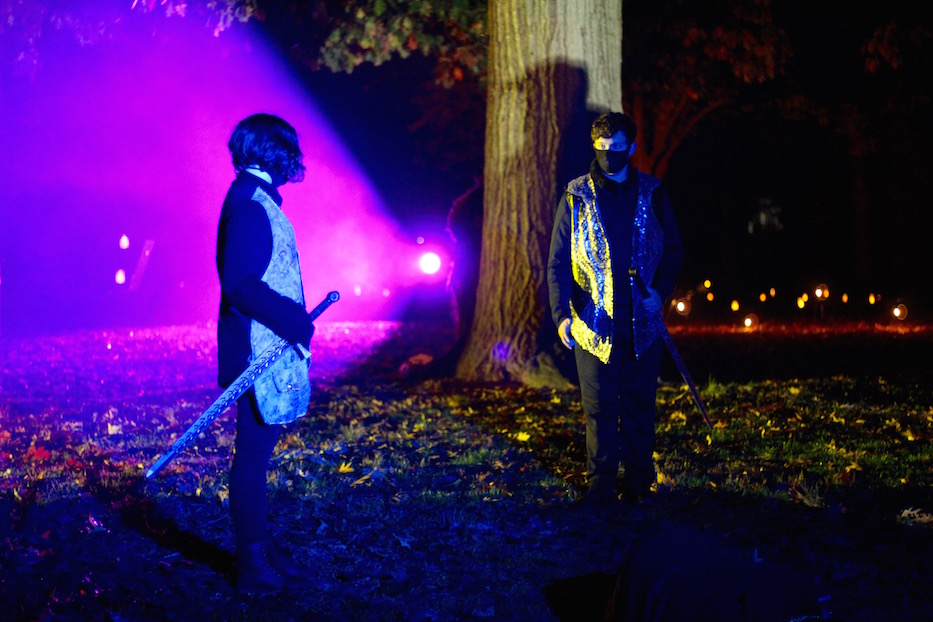
Members of Elm Shakespeare Company's Teen Troupe in an Oct. 31 performance at Edgerton Park. The organization received $45,200 in funding. Lucy Gellman File Photo.
In Hamden, Arts For Learning Connecticut was one of three groups to score funding. Before COVID-19 hit, the organization worked with artists across the state on an individual contract basis. After the pandemic closed schools and made physical gathering impossible, Arts For Learning cancelled $250,000 in contracts between March 13 and June 30. That amounted to some 50 artists who lost funding.
For some artists, said Executive Director John-Michael Parker, that loss may have been a couple hundred dollars. For others, it may have been several thousand. As the organization made a virtual pivot and launched a relief fund in March, Parker also scrambled to apply for and secure Paycheck Protection Program (PPP) funding and get out-of-work artists the resources they desperately needed.
While PPP allowed the organization to keep a full-time salaried staff of three, that money is now gone. The $57,400 in CARES Act funding will go to programming and operating expenses. Parker said its annual budget is approximately $650,000 per year.
"I feel really encouraged and grateful that the governor and folks across the administration have provided this funding," he said. "I'm grateful to folks at the Connecticut Office of the Arts, who have been working their tails off during this time."
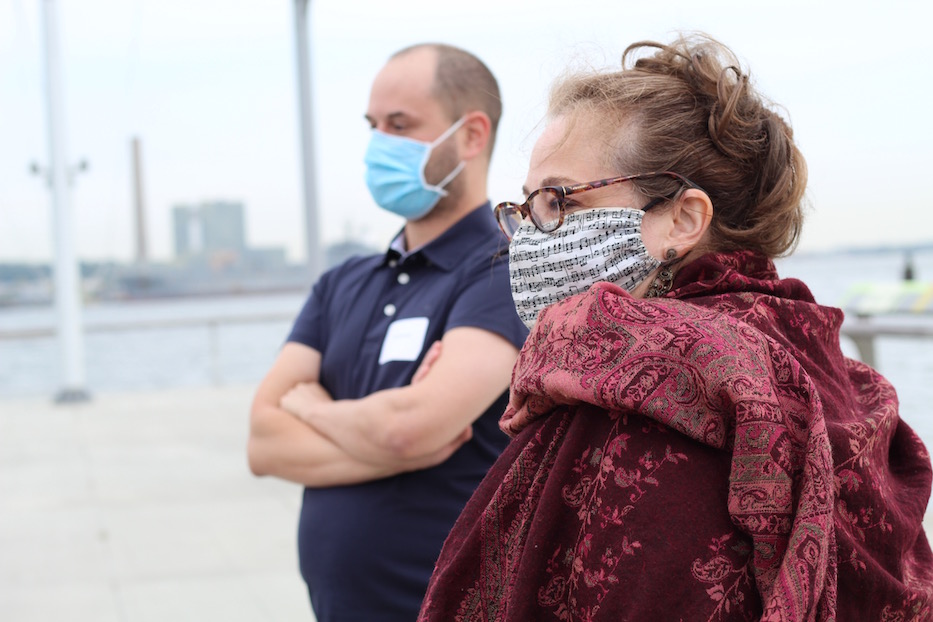
New Haven Symphony Orchestra CEO Elaine Carroll with New Haven Pride Center Director Patrick Dunn at an arts event in September. Lucy Gellman File Photo.
During the application process, some arts leaders also emerged as heroes among their peers. At the New Haven Symphony Orchestra, Chief Executive Officer Elaine Carroll saw that orchestras only qualified for funding if they had their own concert halls. But Connecticut orchestras generally don't have their own concert halls—they rent space. The NHSO, for instance, plays at Woolsey Hall in downtown New Haven.
Carroll organized musicians, maestros, legislators and orchestra directors from across the state to contact the Connecticut Office of The Arts. The office, in turn, changed the funding guidelines. Ultimately, close to $900,000 went to orchestras, from regional organizations to youth orchestras displaced from high school auditoriums.
"That's quite a list of organizations," said Burton Alter, a board member at the NHSO.
The NHSO's plan for the $219,300 in funding is to "spend it making art," Carroll said in a phone call Monday. This month, staff and board members are taking implicit bias training and working on new strategies for online music pedagogy, including remote teaching that is already taking place. Education Director Caitlin Daly-Gonzales has rolled out a new teaching guide on Black composers that she's hoping to introduce to more students.
Looking ahead to next year, Carroll is planning a program for the spring called "NHSO Listens," in which musicians, board members, and a community liaison ask New Haveners what they'd like to see—and hear—from the symphony in their own neighborhoods. She joked that she has also never been so attuned to predictive temperature charts, which the organization is using to map out potential outdoor concerts for late spring of 2021.
She said that she also remains cautiously optimistic about gathering again in Woolsey Hall, where a seating capacity of 2,600 makes social distancing slightly easier. In the meantime, the grant will help the symphony expand its educational footprint.
"We'll figure out how far we can stretch it," she said.
Here is a full list of recipients.

